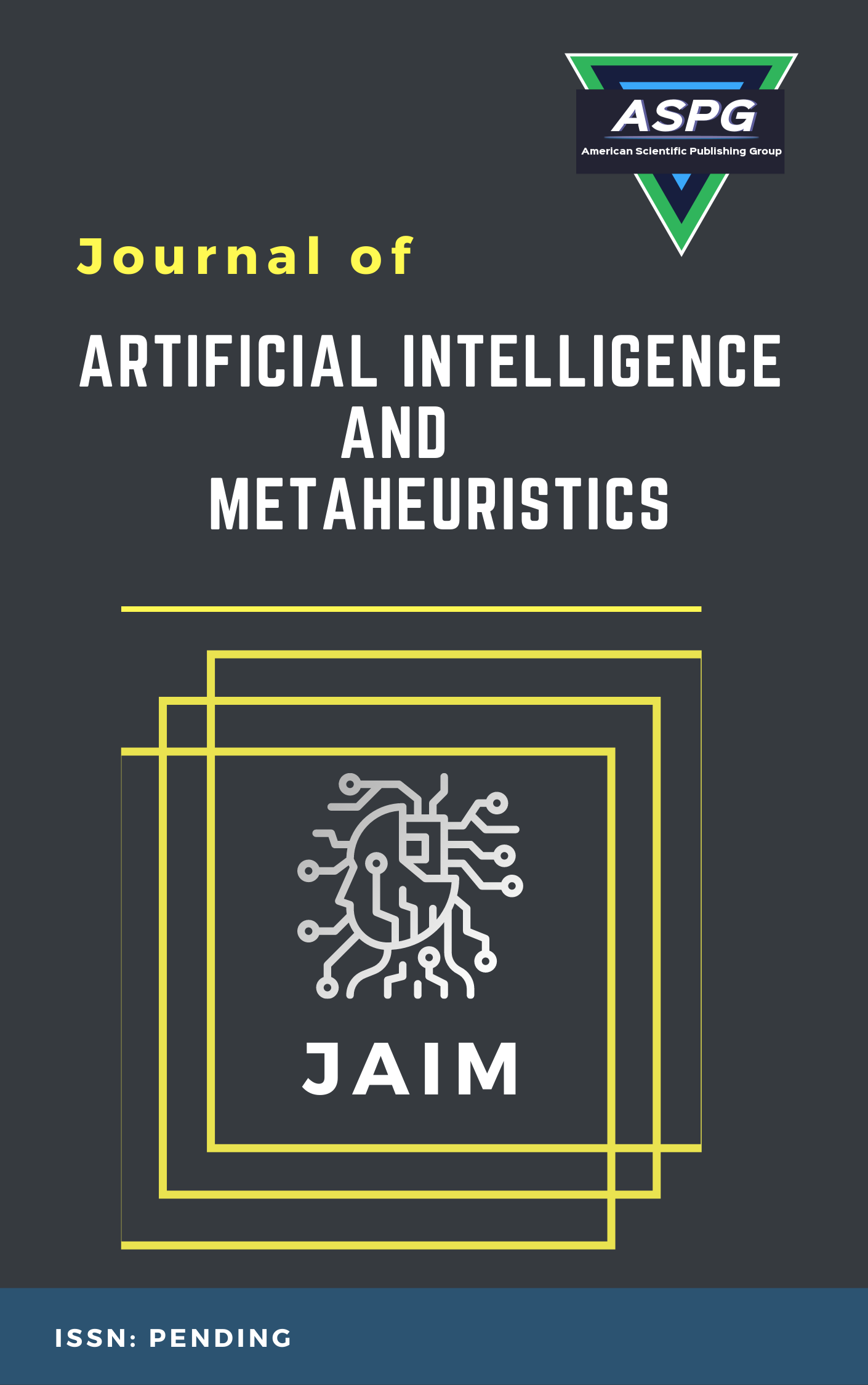

Volume 6 , Issue 1 , PP: 48-55, 2023 | Cite this article as | XML | Html | PDF | Full Length Article
S.K.Towfek 1 *
Doi: https://doi.org/10.54216/JAIM.060105
Managing the increasing number of patients requiring first screening can be significantly aided by real-time automated detection of COVID-19. It's feasible that Deep CNN models that have been trained on sufficiently large datasets will emerge as the most promising options for achieving the goal. This study aims to automatically detect and classify COVID-19 and viral pneumonia infections in chest X-ray images using a deep CNN model. Our proposed model relies on multiclass labeling to accomplish our aims. Design and Organization: Using the ImageNet pre-trained weights, the proposed model is built on top of the VGG16 framework. Additional custom layers were used to fine-tune the model and produce a better overall performance that is more specific to the goal. In terms of its subjects and methods, this study uses 15,153 samples in total. There are X-rays of the lungs from patients with COVID-19, those with viral pneumonia, and healthy volunteers. The entire dataset was split into an 80:20 split for the train and test sets before the model was trained. Image preprocessing and augmentation were used to enhance crucial parts of the photos before they were sent to the model in batches. We measure the model's efficacy with accuracy, precision, recall, and the F1 score. The analysis that was performed statistically was. The model's output is compared to the results of other recent research that have set the standard in the field. The proposed model has a 98% accuracy in multiclass classification on the test dataset, as measured by 98% precision, 96% recall, and 97% F1 score. Receiver operating characteristic curve area scores of 0.99 were achieved in all three multiclass classification situations. Finally, the proposed categorization model may show to be highly useful in the first diagnosis of COVID-19 and viral pneumonia patients, especially when dealing with heavy workloads and large volumes.
Keywork one , Keywork two , Keywork three , Keyword four , &hellip , .
[1] Pneumonia. Available from: https://www.who.int/news-room/ fact-sheets/detail/pneumonia.
[2] Seladi-Schulman J. What to Know About COVID-19 and Pneumonia. Healthline. Available from: https://www.healthline.com/health/ coronavirus-pneumonia#vs-regular-pneumonia.
[3] Gulshan V, Peng L, Coram M, Stumpe MC, Wu D, Narayanaswamy A, et al. Development and validation of a deep learning algorithm for detection of diabetic retinopathy in retinal fundus photographs. JAMA, 316(22), 2402-2410, 2016.
[4] Gargeya R, Leng T, Automated identification of diabetic retinopathy using deep learning. Ophthalmology, 124(7), 962-969, 2017.
[5] Amrane M, Oukid S, Gagaoua I, Ensari T, Breast Cancer Classification Using Machine Learning. 2018 Electric Electronics, Computer Science, Biomedical Engineerings’ Meeting (EBBT), Istanbul, 1-4, 2018.
[6] Hussain L, Aziz W, Saeed S, Rathore S, Rafique M. Automated Breast Cancer Detection Using Machine Learning Techniques by Extracting Different Feature Extracting Strategies. 2018 17th IEEE International Conference on Trust, Security and Privacy in Computing and Communications/12 IEEE International Conference on Big Data Science and Engineering (TrustCom/BigDataSE), 327-31, 2018.
[7] Xie Y, Xia Y, Zhang J, Song Y, Feng D, Fulham M, et al, Knowledge-based collaborative deep learning for benign-malignant lung nodule classification on chest CT. IEEE Trans Med Imaging, 38(4), 991-1004, 2019.
[8] Wu Q, Zhao W., Small-Cell Lung Cancer Detection Using a Supervised Machine Learning Algorithm. 2017 International Symposium on Computer Science and Intelligent Controls (ISCSIC), Budapest, 88-91, 2017.
[9] Krizhevsky A, Sutskever I, Hinton GE., Imagenet Classification with Deep Convolutional Neural Networks. In Advances in Neural Information Processing Systems, 1097-105, 2012.
[10] Neuman MI, Lee EY, Bixby S, Diperna S, Hellinger J, Markowitz R, et al, Variability in the interpretation of chest radiographs for the diagnosis of pneumonia in children. J Hosp Med, 7, 294-298, 2012.
[11] Chowdhury ME, Rahman T, Khandakar A, Mazhar R, Kadir MA, Mahbub ZB, et al, Can AI help in screening viral and covid-19 pneumonia?, IEEE Access, 8, 65-76, 2020.
[12] Rahman T, Khandakar A, Qiblawey Y, Tahir A, Kiranyaz S, Kashem SB, et al, Exploring the effect of image enhancement techniques on covid-19 detection using chest X-ray images. Computers in Biology and Medicine, 132, 2021.
[13] BIMCV-COVID19, Datasets Related to COVID19’s Pathology Course. Available from: https://bimcv.cipf.es/bimcv-projects/bimcv-covid19/#1 590858128006-9e640421-6711. [Last accessed on 2021 Mar 06].
[14] COVID-19-image-repository. Available from: https://github.com/ ml-workgroup/covid-19-image-repository/tree/master/png.
[15] COVID-19 Database. Available from: https://sirm.org/category/ senza-categoria/covid-19/.
[16] “Eurorad.org.” Eurorad. Available from: http://www.eurorad.org/. [Last accessed on 2021 Mar 06].
[17] “COVID-19 Image Data Collection.” Cohen2020covid, 2020. Available from: http://github.com/ieee8023/covid-chestxray-dataset.
[18] Arman H, Mahdiyar MM, Seokbum K. COVID-19 Chest X-Ray Image Repository. Figshare Dataset; 2020. Available from: https://doi. org/10.6084/m9.figshare. 12580328.
[19] “Armiro/COVID-CXNet.” Armiro, 2020. Available from: https:// github.com/armiro/COVID-CXNet.
[20] RSNA Pneumonia Detection Challenge. Available from: https://www. kaggle.com/c/rsna-pneumonia-detection-challenge/overview. [Last accessed on 2021 Mar 06].